As reported by the Irish Farmers Journal last week, the overall winner of the 2022 Grassland Farmer of the Year was Diarmaid Fitzgerald from Cratloe, Co Clare.
Diarmaid won the Young Farmer category as well as taking the overall prize. He impressed the judges with his analytical approach to improving grassland on his dairy farm near the Shannon estuary.
Mixed soils winner

Brothers Michael and Martin Walsh from Ballinakill, Co Laois, won the mixed soils category in the competition. The brothers, who both work full-time off farm converted to dairying in 2021 having previously had suckler cows on the 43ha farm. They milked 47 cows in 2021 and milked 64 cows in 2022. Average grass growth last year was 14.5t DM/ha from just 129kg N/ha. While most of the land has been reseeded in recent years the mineral soils are heavy and there are springs in most fields meaning drainage is a constant effort to get water away.
Clover winner
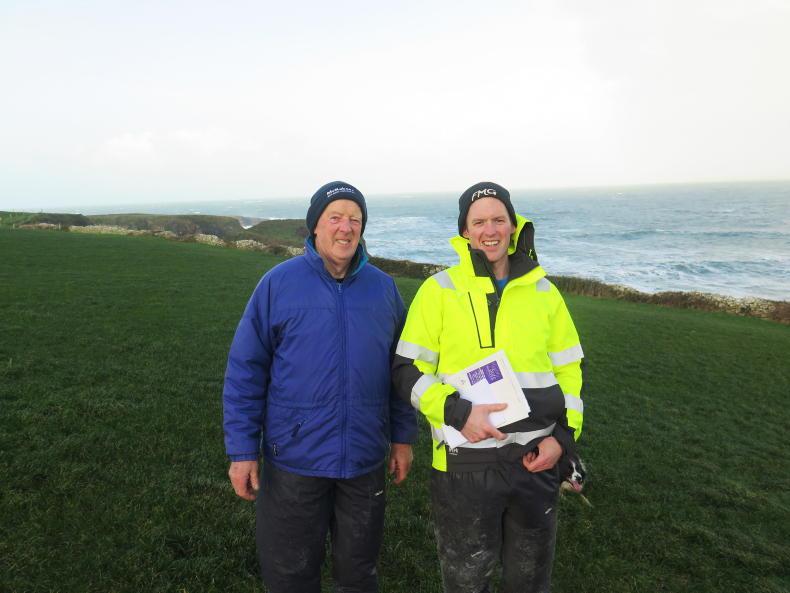
Michael and John Casey from Causway, Co Kerry, on their dairy farm by the sea
Winning the award for clover/sustainable farming is John Casey, from Causeway in Co Kerry. John is farming mostly heavy land next to the sea but despite these drawbacks John is very much focused on getting clover established and contributing nitrogen to the farm. Over 30% of the farm is in a low-nitrogen regime with clover the primary driver of grass growth. John’s intention is to continue to oversow clover and incorporate it into the farm.
Innovation in grassland winner
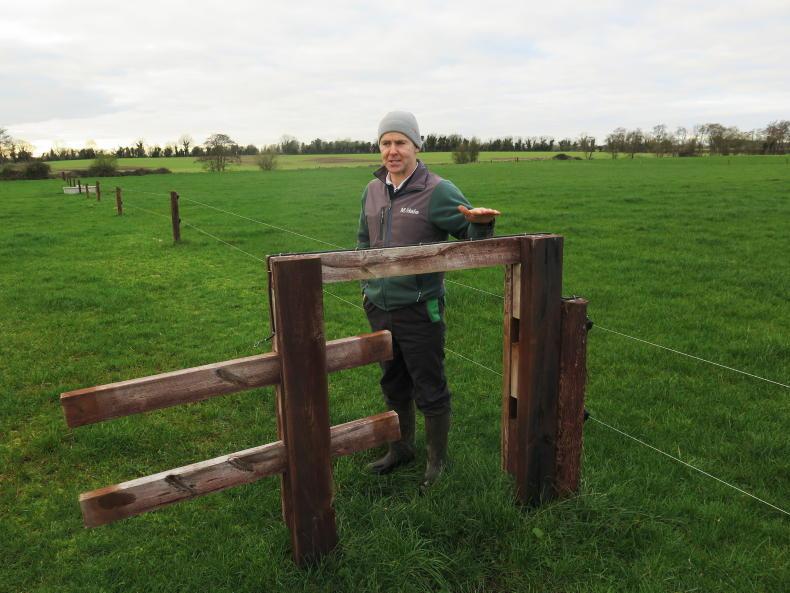
Michael McGuigan with his specially designed creep gate on his farm at Longwood, Co. Meath
Winning the innovation award is Meath-based suckler farmer Michael McGuigan from Longwood. Michael won the award for his innovative use of post and rail fencing to create a creep gate for calves to graze ahead of the cows. The bottom two rails slip out, allowing the calves to walk through the gate while cows cannot. There is one of these creep gates in every paddock, enabling a leader follower system between cows and calves.
Drystock winner
Michael McGuigan also won the drystock category for how he manages grass on his Meath suckler farm. He keeps 30 autumn calving cows and sells the bull calves as strong weanlings in September while he keeps the heifers for either finishing or as replacements. Last year, the 23.5ha farm grew 11.4t DM/ha and Michael applied 116kg N/ha of chemical nitrogen across the farm. The farm is superbly laid out, with good paddock infrastructure and roadways.
Dairy winner
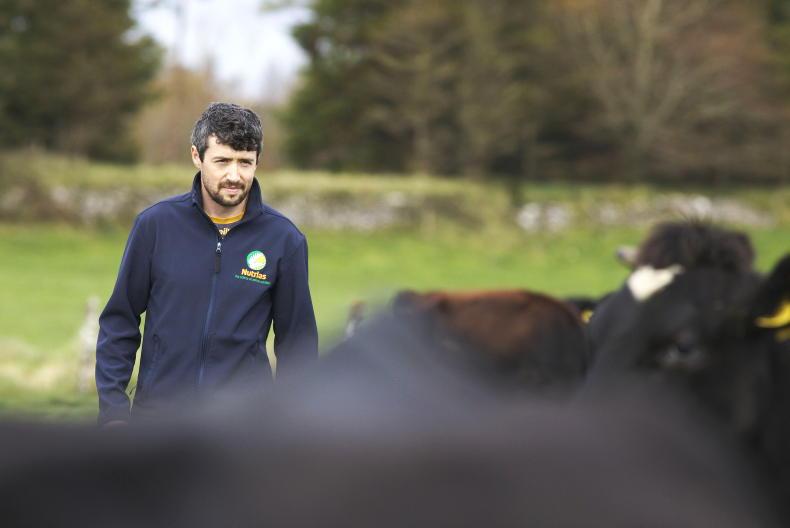
David Gannon, Dairy Farmer, Dunsandle, Craughwell, Co Galway. Photograph by David Ruffles
David Gannon from Craughwell, Co Galway, won in the dairy category. New entrants to dairy farming in 2018, David and his father Robbie are milking 160 cows on a 66ha milking platform. Soil type in the area is mixed and a high proportion of the milking platform is leased. Part of the milking platform is callow ground that the cows don’t graze so the effective area in the milking platform is 52ha giving a stocking rate of three cows/ha. The farm grew 14.6t DM/ha in 2022 with 182kg N/ha applied on the milking platform and 147kg N/ha applied across the whole farm in the form of chemical nitrogen.
Runners-up
Runner-up prizes in the dairy category went to Kyle Hanbidge from Co Wicklow, Jimmy Cotter from Co Cork and Alan Duggan from Co Mayo. Michael Cunniffe from Co Roscommon was a runner-up in the beef category.
Padraig Walshe remembered
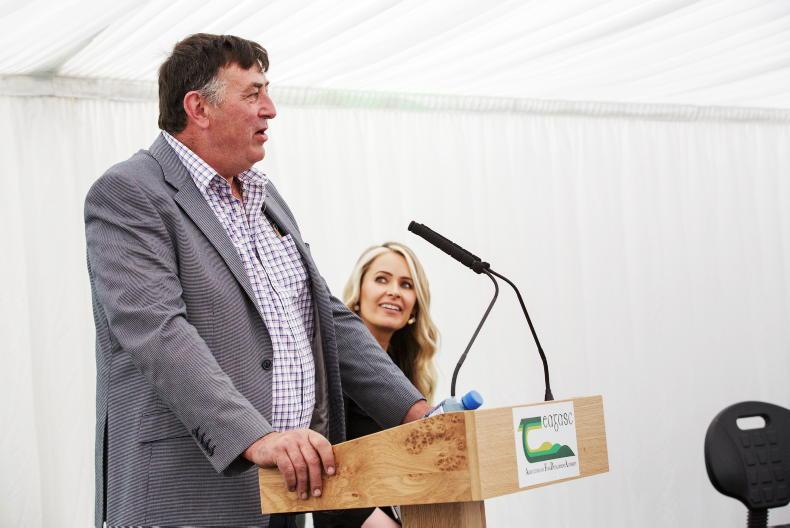
Padraig Walshe. \ Donal O' Leary
At the time of his sudden passing in February, Padraig Walshe was the chair of the Grass 10 programme of which the Grassland Farmer of the Year awards are a key part. Members of the Walshe family were special guests at the ceremony and tributes to Padraig were paid by the chair of the Teagasc authority Liam Herlihy and Pat Dillon, Teagasc director of research.
Both referenced Padraig’s enormous contribution to Irish agriculture but particularly to the advancement of grass-based farming practices.
Practices such as extended grazing and calving cows to grass are now part of mainstream farming advice, delivering huge benefits to Irish farmers. However, these were controversial topics in the 1980s and 1990s and not part of core Teagasc research and advice.
Liam Herlihy said that when Padraig was president of Macra na Feirme in the late 1980s, he was appointed to the Teagasc Authority and brought the board to his farm in Durrow to see at first hand the benefits of extended grazing and improved grassland management. This visit and Padraig’s influence on the board prompted Teagasc to invest more in grazing research. According to Liam this was the catalyst for the grass-based sectors we have today and the value it delivers to Irish farmers.
Following on from this Pat Dillon spoke about how Padraig used his roles as president of IFA and then as president of EU farming group COPA to ensure Irish farmers stood to benefit from the removal of EU milk quotas.
“He helped to ensure that the whole industry was ready for quota abolition, from milk processors to Teagasc research and advisory services. It didn’t just happen in 2015. There was 10 years of work put into making sure Irish farmers were able to benefit from quotas going and Padraig was instrumental in all of that,” Pat said.
As reported by the Irish Farmers Journal last week, the overall winner of the 2022 Grassland Farmer of the Year was Diarmaid Fitzgerald from Cratloe, Co Clare.
Diarmaid won the Young Farmer category as well as taking the overall prize. He impressed the judges with his analytical approach to improving grassland on his dairy farm near the Shannon estuary.
Mixed soils winner

Brothers Michael and Martin Walsh from Ballinakill, Co Laois, won the mixed soils category in the competition. The brothers, who both work full-time off farm converted to dairying in 2021 having previously had suckler cows on the 43ha farm. They milked 47 cows in 2021 and milked 64 cows in 2022. Average grass growth last year was 14.5t DM/ha from just 129kg N/ha. While most of the land has been reseeded in recent years the mineral soils are heavy and there are springs in most fields meaning drainage is a constant effort to get water away.
Clover winner

Michael and John Casey from Causway, Co Kerry, on their dairy farm by the sea
Winning the award for clover/sustainable farming is John Casey, from Causeway in Co Kerry. John is farming mostly heavy land next to the sea but despite these drawbacks John is very much focused on getting clover established and contributing nitrogen to the farm. Over 30% of the farm is in a low-nitrogen regime with clover the primary driver of grass growth. John’s intention is to continue to oversow clover and incorporate it into the farm.
Innovation in grassland winner

Michael McGuigan with his specially designed creep gate on his farm at Longwood, Co. Meath
Winning the innovation award is Meath-based suckler farmer Michael McGuigan from Longwood. Michael won the award for his innovative use of post and rail fencing to create a creep gate for calves to graze ahead of the cows. The bottom two rails slip out, allowing the calves to walk through the gate while cows cannot. There is one of these creep gates in every paddock, enabling a leader follower system between cows and calves.
Drystock winner
Michael McGuigan also won the drystock category for how he manages grass on his Meath suckler farm. He keeps 30 autumn calving cows and sells the bull calves as strong weanlings in September while he keeps the heifers for either finishing or as replacements. Last year, the 23.5ha farm grew 11.4t DM/ha and Michael applied 116kg N/ha of chemical nitrogen across the farm. The farm is superbly laid out, with good paddock infrastructure and roadways.
Dairy winner

David Gannon, Dairy Farmer, Dunsandle, Craughwell, Co Galway. Photograph by David Ruffles
David Gannon from Craughwell, Co Galway, won in the dairy category. New entrants to dairy farming in 2018, David and his father Robbie are milking 160 cows on a 66ha milking platform. Soil type in the area is mixed and a high proportion of the milking platform is leased. Part of the milking platform is callow ground that the cows don’t graze so the effective area in the milking platform is 52ha giving a stocking rate of three cows/ha. The farm grew 14.6t DM/ha in 2022 with 182kg N/ha applied on the milking platform and 147kg N/ha applied across the whole farm in the form of chemical nitrogen.
Runners-up
Runner-up prizes in the dairy category went to Kyle Hanbidge from Co Wicklow, Jimmy Cotter from Co Cork and Alan Duggan from Co Mayo. Michael Cunniffe from Co Roscommon was a runner-up in the beef category.
Padraig Walshe remembered

Padraig Walshe. \ Donal O' Leary
At the time of his sudden passing in February, Padraig Walshe was the chair of the Grass 10 programme of which the Grassland Farmer of the Year awards are a key part. Members of the Walshe family were special guests at the ceremony and tributes to Padraig were paid by the chair of the Teagasc authority Liam Herlihy and Pat Dillon, Teagasc director of research.
Both referenced Padraig’s enormous contribution to Irish agriculture but particularly to the advancement of grass-based farming practices.
Practices such as extended grazing and calving cows to grass are now part of mainstream farming advice, delivering huge benefits to Irish farmers. However, these were controversial topics in the 1980s and 1990s and not part of core Teagasc research and advice.
Liam Herlihy said that when Padraig was president of Macra na Feirme in the late 1980s, he was appointed to the Teagasc Authority and brought the board to his farm in Durrow to see at first hand the benefits of extended grazing and improved grassland management. This visit and Padraig’s influence on the board prompted Teagasc to invest more in grazing research. According to Liam this was the catalyst for the grass-based sectors we have today and the value it delivers to Irish farmers.
Following on from this Pat Dillon spoke about how Padraig used his roles as president of IFA and then as president of EU farming group COPA to ensure Irish farmers stood to benefit from the removal of EU milk quotas.
“He helped to ensure that the whole industry was ready for quota abolition, from milk processors to Teagasc research and advisory services. It didn’t just happen in 2015. There was 10 years of work put into making sure Irish farmers were able to benefit from quotas going and Padraig was instrumental in all of that,” Pat said.









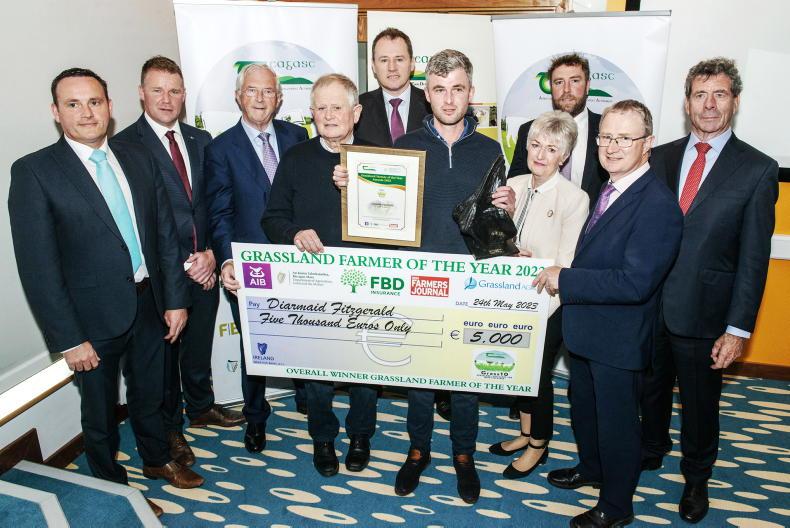

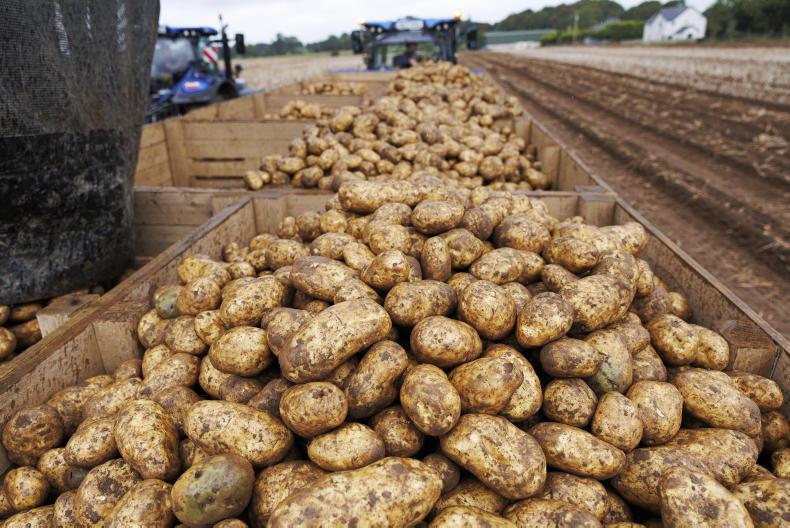
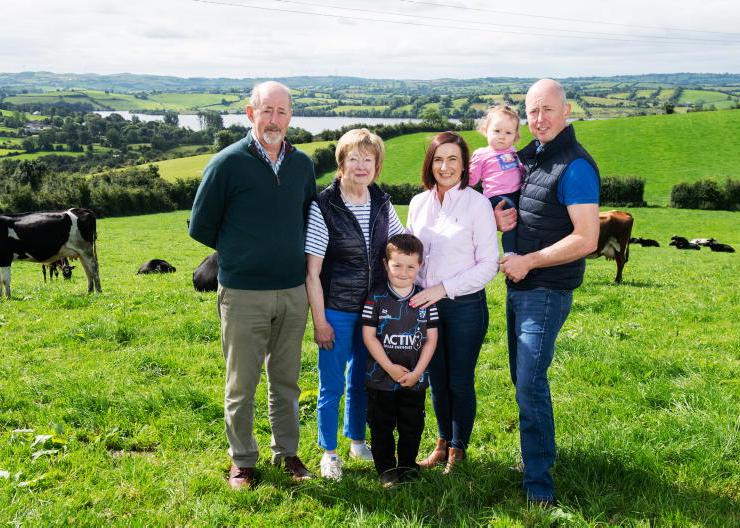
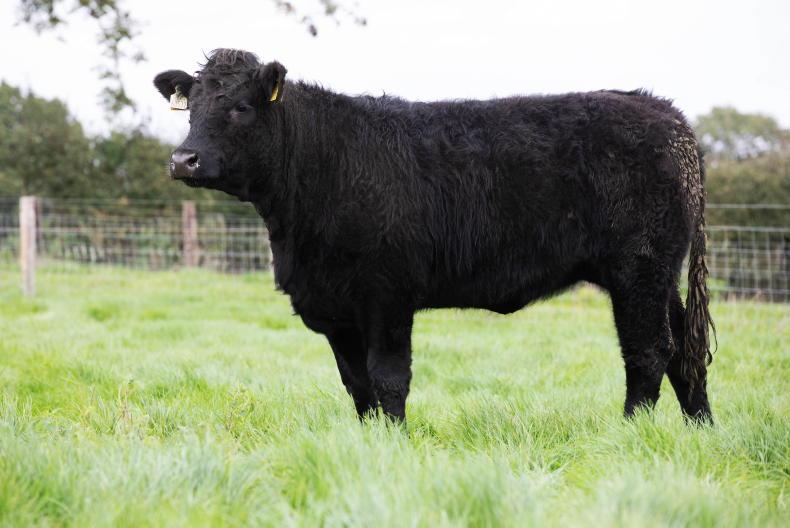
SHARING OPTIONS